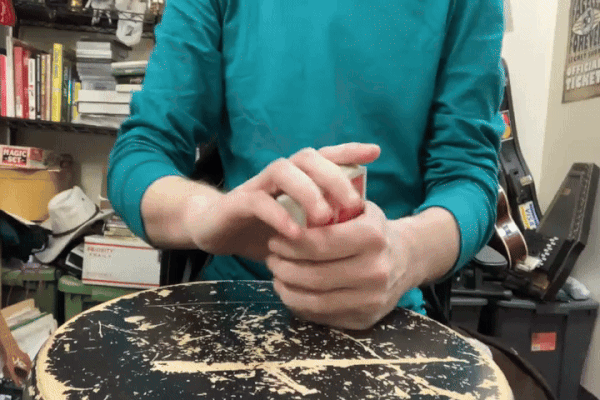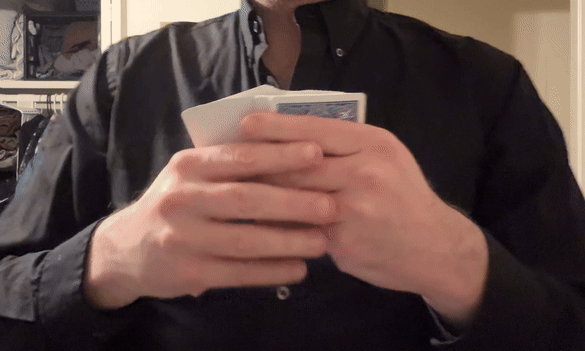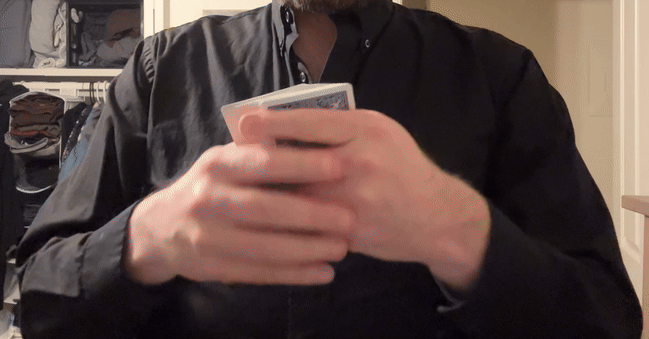The next morning, I text her a quick reminder to bring the deck of cards when we meet up.
That night, she comes over. We grab dinner and hang out for a bit.
As the evening winds down, she asks, “Hey—what’s the thing with the deck of cards?”
“Oh, right,” I say, and nod toward her bag. “Grab the deck.”
She pulls it out and hands it to me. I remove the cards from the case. “You never looked through the deck at all after you shuffled them, right? So you don’t know where any particular card is?”
She confirms she didn’t.
I give her the deck to hold.
“And those are in the same order they were when you slept on them? You haven’t changed anything?”
She agrees.
“Okay, I’m going to try and explain this, but I only know the basics—and I’m not even sure if what I know is accurate. There’s not much of a record of this stuff.
“So, in Prague, in the 1960s they were working on some experiments that were about… well, the only way I can think of them is as like a kind of reverse dream interpretation. So, like, the way we think of dream interpretation is that you’ll have a dream, and there will be some weird imagery in the dream. And then you’ll wake up and you will try and fit that imagery into understanding some aspect of your life. There are books on dream symbolism, but obviously it’s not exactly science.
“What they were doing in Prague was the opposite. Instead of taking some random imagery from their dreams and trying to apply it to the real world, they were focusing on some surreal images while awake and hoping to get concrete, real-world information in their dream state. They were seeding their dreams with these visuals.
“I think they were using it for some military purpose—something connected to remote viewing. Like, they had a way of linking specific dreamlike imagery to specific targets—weapons or troops or something—and by concentrating on this imagery while they were awake, the remote viewers could unconsciously retrieve actual location information about where those things were. The idea was that your dreaming mind might do some kind of pattern-matching your waking mind couldn't.
“I don’t know if it ever worked. I doubt there are records of that part. But this thing with the playing cards—that was a preliminary test. And apparently it survived.
“They developed a deck of imagery—one unique, surreal scene for each playing card. The theory was: if someone focused on a particular image before sleep, then during their dreams, they might receive a number. A number between 1 and 52. The exact location of the card they were thinking of.
“So… do you remember getting a number in your dream last night?”
“No,” Giana says.
“Do you remember anything from your dream.”
“Not… no. I think there was a clown in it?”
“Hmm… okay, well concentrate on that image of a clown and I want you to let a number between 1 and 52 come to your mind. Don’t tell me what it is, just let it come to you.”
She nods. After a moment, I say, “Got one?”
She does.
“Deal that many cards into my hand.”
She starts dealing. She stops a little before halfway through the deck.
I take a peek at the top card. “Were you thinking of a black card?”
“No,” she says.
“You weren’t thinking of the 4 of Clubs?” I ask.
She shakes her head and smiles. We both know what that means. We went through all that effort, and it didn’t work.
“Well, that’s good. Because this is not the 4 of Clubs. What card did you think of last night?”
“The 9 of Diamonds.”
“And what number did you think of?”
“Twenty-two.”
I gesture toward the pile in my hand. “Turn over the 22nd card you dealt.”
She does.
It’s the 9 of Diamonds.
She opens her mouth to speak—but stops.
I can see her mind working though things. It’s her deck. She shuffled it. She put it in the case. She never told me the card or the number (not until just now). She dealt the cards. She turned over the card. With no objections gaining traction, her mind stalls.
“That’s wild, right?” I say, watching her try to form a theory.
She asks to see the site again.
In the desert at dusk, a sleek red fox approaches. Its eyes are glowing lanterns, and inside them, you see moments from tomorrow.
We try to find a connection to the 9 of Diamonds in this imagery. “A lantern flame is kind of diamond-shaped,” she says.
Maybe it’s a reach. Maybe it’s not.
But without a clear explanation for how I could have done this, she’s left to at least consider this option:
That a surreal image—implanted in her mind the night before—somehow reached through her dream and gave her real information from the waking world.
Method
They Never Name Their Card
The website they’re sent to is a Xeno site. (Here.) Thanks to Marc Kerstein’s brilliant app, you can see exactly which card they’re focusing on—without them ever saying it out loud.
They Never Name Their Number
It doesn’t matter. When you meet up, you take the cards out of the case. As you casually spread through them and say something like, “You don’t know where any particular card is in the deck, right?”—you cull their card to the top.
They Deal The Cards And Turn Over Their Selection
You ask them to deal the number of cards they’re thinking of into your hand. They can deal one card or all 52. It doesn’t matter.
The card they were thinking of is now on the bottom of the packet in your hand.
There are a number of things you could do now. You could do a Bottom Change, a standard Bottom Deal, or a One-Handed Bottom Deal and give them (supposedly) the last card they dealt.
I prefer something easier and, for me, better.
I square up the cards in my hand, but I jog the bottom card to the right, while I peel up and take a peek at the last card that was dealt.
I now name the opposite color of the card I know they’re thinking of. “Was it black?”
This suggests that it didn’t work. And if they are hyper-focused on the deck, it gives them a reason to let down their guard a little bit. I just wait them out. As soon as they look away from the deck even slightly, I pull out all the cards above the bottom card to the left. I now tilt up the formerly bottom card, peeking at it similarly to how I just did with the top card. “It wasn’t the 4 of Clubs?”
I now drop the card on top and I extend my hand towards them, held flat.
Here’s the exposed view of what that looks like if you’re looking at the hands as it happens. In real life, the “move” is invisible if they’re not staring at the deck. (Even if you just look at the top of your computer screen or phone after my friend first looks at the card, you won’t really seem him do the switch out of your periphery. And you know what to expect.)










